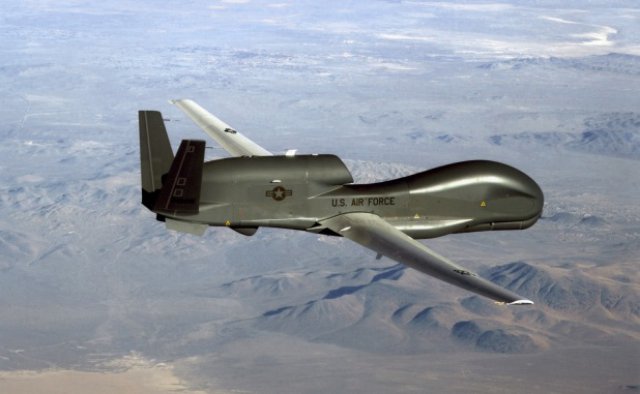 An airborne sense-and-avoid (ABSAA) system enabling the Northrop Grumman RQ-4 Global Hawk to fly in civil airspace will transition to full-scale development at the end of September after completion of a final round of research test flights.
An airborne sense-and-avoid (ABSAA) system enabling the Northrop Grumman RQ-4 Global Hawk to fly in civil airspace will transition to full-scale development at the end of September after completion of a final round of research test flights.
The multi-sensor system has been in development at the U.S. Air Force Research Laboratory (AFRL) since 2008 under the Multiple Intruder Autonomous Avoidance (MIAA) science and technology program.
Flights from Niagara Falls, N.Y., in August/September will mark the final phase of tests using a Calspan-operated Learjet equipped with the MIAA sensors and algorithms and acting as a surrogate for the unmanned Global Hawk.
The flights will evaluate collision-avoidance algorithms and a new electronically scanned sense-and-avoid radar, as well as a new technique to perform passive target ranging from the two-dimensional imagery provided by electro-optical sensors.
“When the flight tests conclude, MIAA will transition to EMD [engineering and manufacturing development] for the Global Hawk programme,” says Captain Matt Schneider, AFRL Programme Manager for Sense-and-Avoid Technology.
A system based on MIAA technology is expected to fly on the Global Hawk in 2015, with initial operating capability planned for 2017, says Paul Schaeffer, Airborne Sense-and-Avoid Programme Manager for the Global Hawk programme office.
The Air Force is leading development, but the Navy and Army are both partners in the ABSAA effort. “The Navy’s desire is to put the system on their aircraft [the MQ-4C Triton], while the Army’s interest is in controls and displays commonality with its ground-based sense-and-avoid system,” Schaeffer says.
The goal of MIAA is to enable unmanned aircraft to autonomously detect and avoid both cooperative and noncooperative intruders, responding within minutes to longer-range threats to maintain safe separation, and within seconds to short-range threats to avoid collisions.
The system uses electro-optical sensors and radar to detect and track noncooperative targets such as general-aviation aircraft without transponders. The traffic collision avoidance system and ADS-B (automatic dependent surveillance-broadcast) are used to detect and track cooperative commercial aircraft.
Source: Aviation Week
